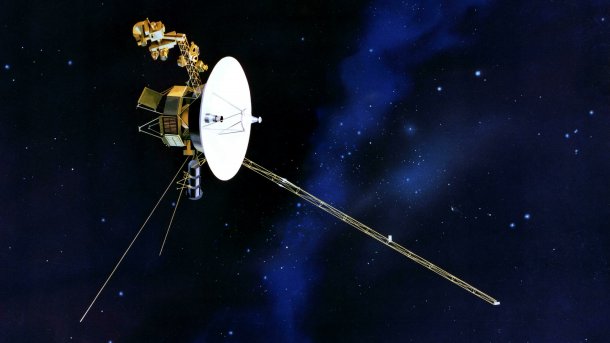Voyager 1 transmits correct data for the first time in months
For months, Voyager 1 sent nothing but junk data and hopes for a solution faded. Now the repair has worked and the probe is communicating clearly again.

Artist's impression of a Voyager probe
(Image: NASA/JPL)
After months of sending nothing but junk data to Earth, the Voyager 1 space probe has taken the first step towards repair. Correct data on its health and status was received again for the first time this past weekend. NASA has now made this public and added that scientific measurement data is also expected again soon. When the correct data arrived at the Jet Propulsion Laboratory on Saturday, the responsible team celebrated. It was the first time since November that usable data on the condition of Earth's most distant probe had been sent again.
Inaccessible code was shared
As the US space agency NASA now recalls, Voyager 1 has only sent garbage data because part of the memory on board is broken. A single chip is damaged and as a countermeasure it was decided to store the code stored there elsewhere in the so-called Flight Data Subsystem (FDS). However, as no single area is large enough for this, it had to be split up and all referencing had to be adapted accordingly. At the same time, it was necessary to ensure that the area continued to function as a whole despite the physical division. The first instructions for this were sent on April 18 - and then it was a case of waiting. Only after 45 hours was it clear that the procedure had worked.
NASA announced in December that Voyager 1 was only sending garbage data. The FDS, one of three computers on board, was responsible. It is responsible for collecting data from the scientific instruments and packing it together with technical information into packages that are sent to Earth. This no longer works and as a result only a carrier signal arrived on Earth, confirming that the probe was active. It was also confirmed that the probe was receiving commands from Earth. At the beginning of March, the probe was then "nudged" with a signal and surprisingly responded with a complete memory image. This was the decisive help in the search for the cause.
In view of the months of difficult troubleshooting and the age of the probe, increasingly pessimistic words about its fate could already be heard. In some cases, even swansongs were published. The team was optimistic, but as time went on it seemed quite possible that the end of the mission had been reached. Unlike more recent probes, there are no simulators on Earth for this old model, and the team has to find and sift through decades-old paper manuals. Many of the people who once developed and built the device have long since retired or died. The work is made more difficult by the probe's enormous distance: signals take well over 22 hours to get there.
Voyager 1 and its sister probe Voyager 2 were launched in 1977 and were able to take advantage of a rare constellation for their journey in which the four largest planets in the solar system came particularly close to each other. Both visited Jupiter and used it to gain momentum towards Saturn, where their paths diverged: Voyager 1 catapulted out of the plane of the solar system there, Voyager 2 set course for Uranus and Neptune. Originally only a four-year mission was planned; they have now been traveling for 46 years and are still active. The Voyager program is one of NASA's greatest successes. The Voyager twins were the last to reach interstellar space. Voyager 2 continues to function normally, NASA now says.
(mho)